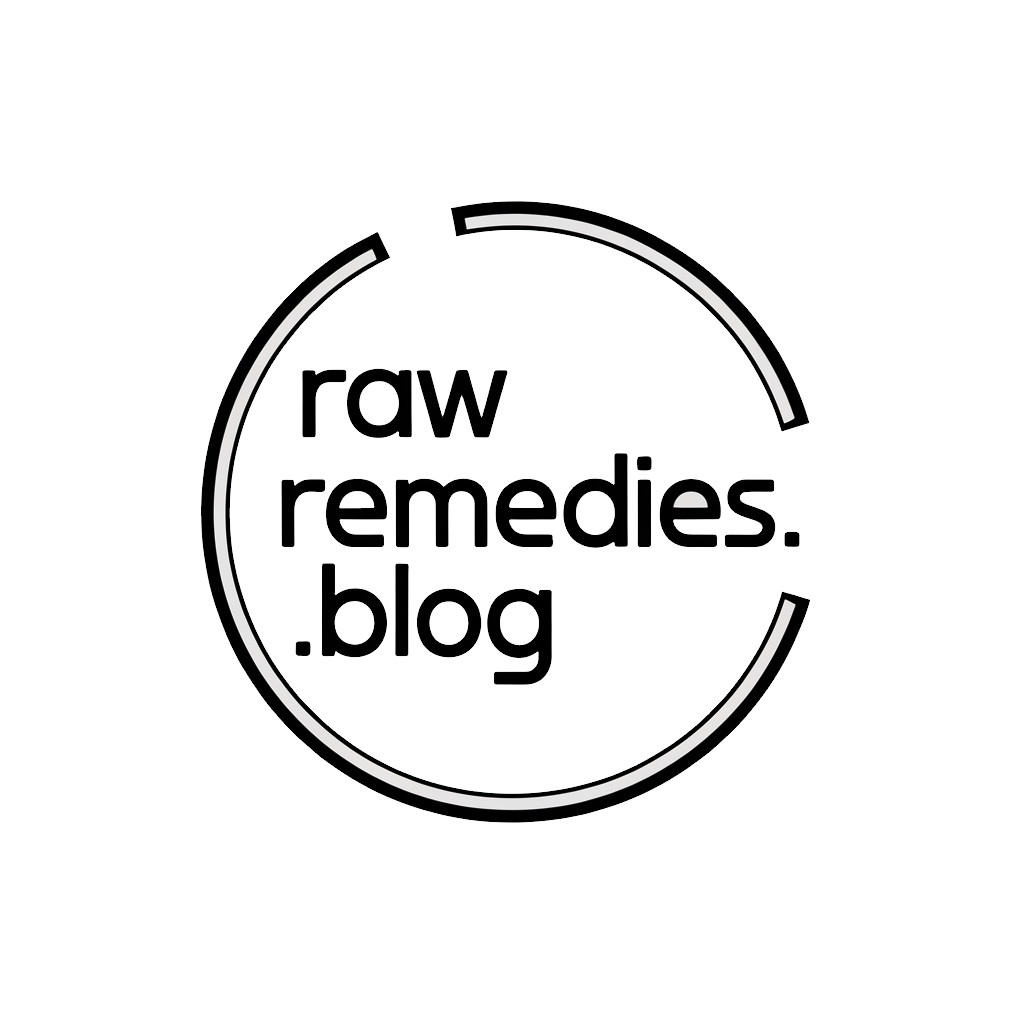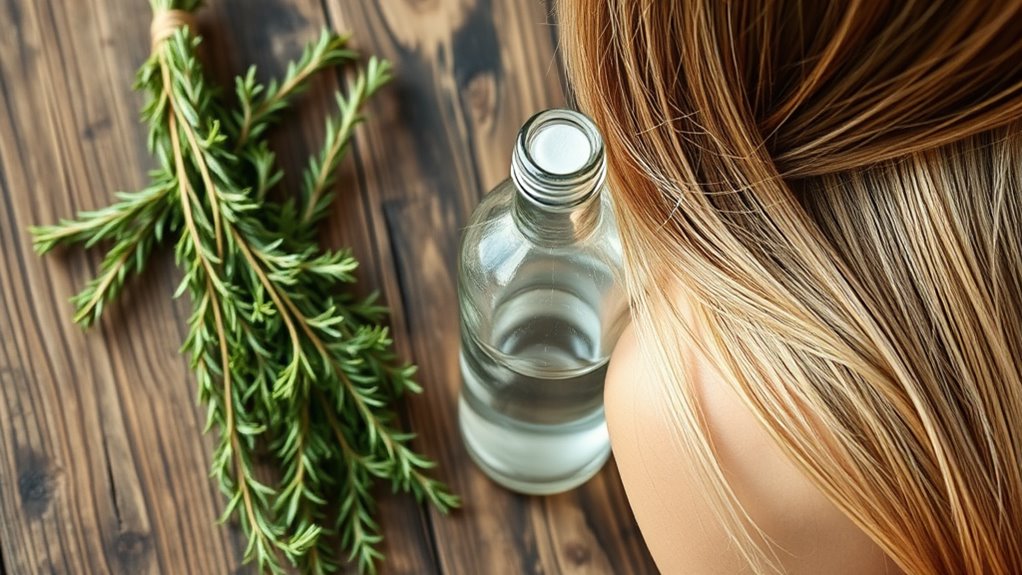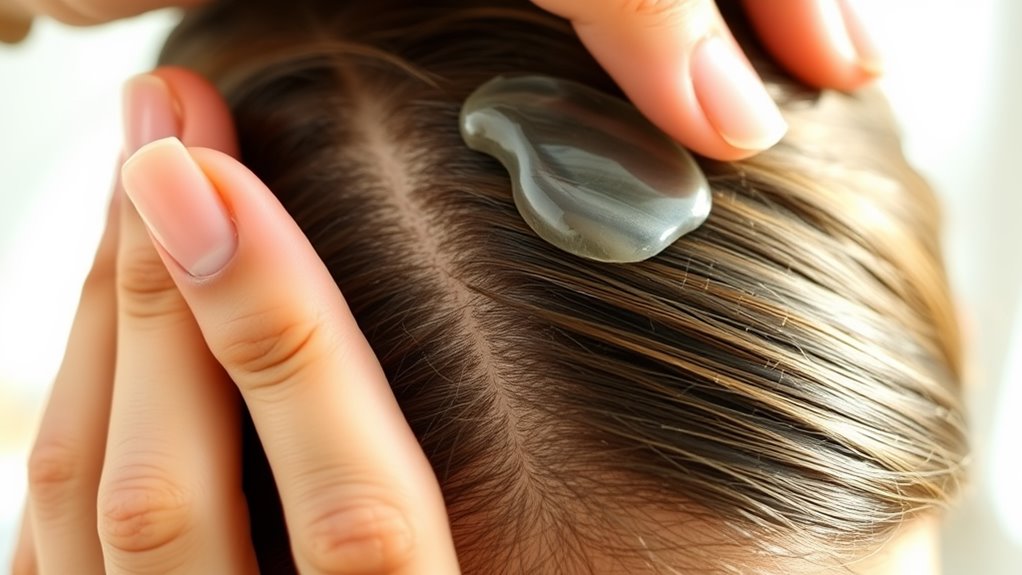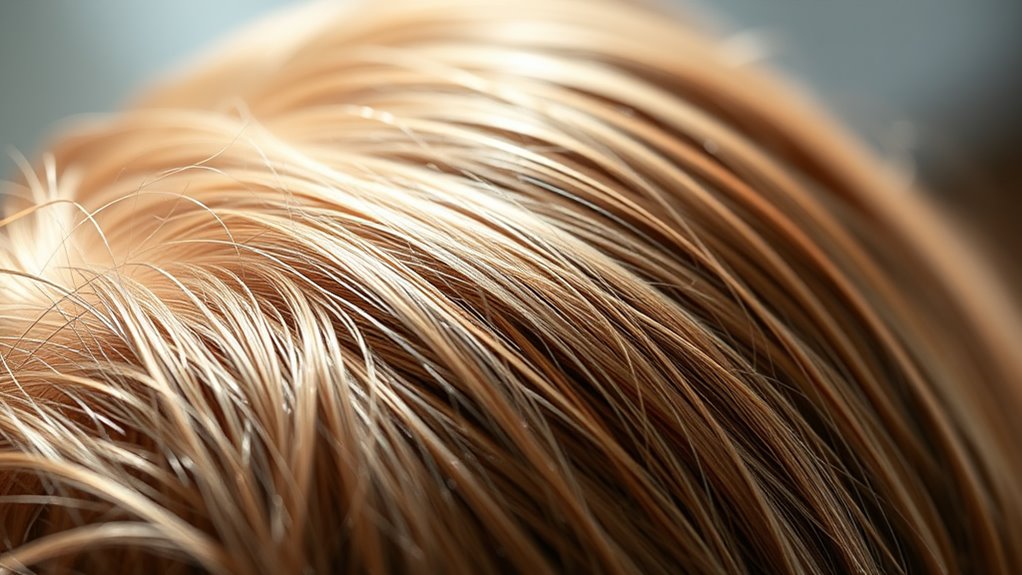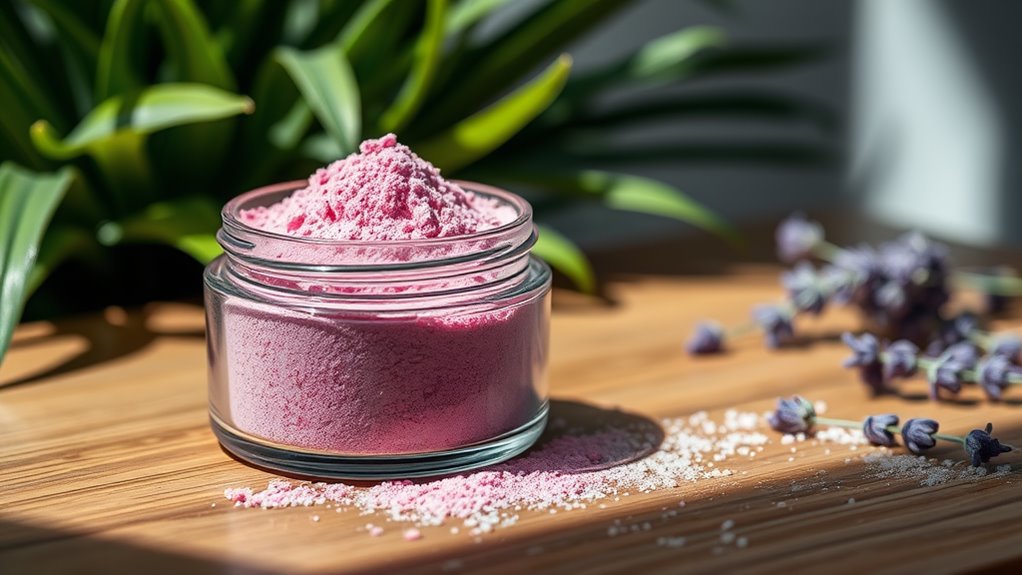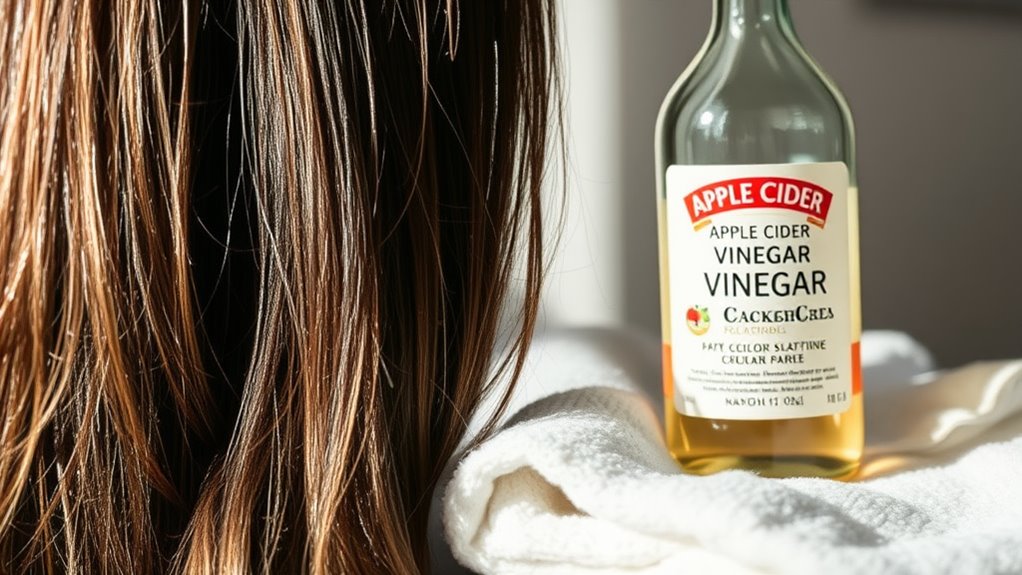Beat Greasy Hair Naturally With This DIY Rinse!
If you’re struggling with greasy hair, you know it can throw off your whole look. You can fight it effectively with a simple DIY rinse that uses natural ingredients to balance pH and control oil. Discover the easy preparation and application steps next to keep your hair fresh longer.
Key Takeaways
- Overactive sebaceous glands cause greasy hair; a DIY rinse with apple cider vinegar can help regulate oil production.
- Use apple cider vinegar as the main ingredient, mixed with water in a 1:4 ratio, and add tea tree oil for antibacterial benefits.
- Prepare the rinse by stirring ingredients, apply after shampooing, massage into scalp, and rinse with cool water.
- This natural rinse restores pH balance, removes excess oil, and promotes healthier, shinier hair without harsh chemicals.
- Customize with essential oils like lavender or peppermint, and always patch test to avoid irritation.
Causes of Greasy Hair
Greasy hair usually results from overactive sebaceous glands producing excess oil, often triggered by hormones, genetics, or poor habits like over-washing.
To reduce scalp oil naturally, you balance your routine by avoiding hot water, which stimulates glands, and managing stress that amps up production.
Diet plays a key role; you’re loading up on nutrient-rich foods to regulate oil.
Stay consistent for lasting control.
Additionally, using apple cider vinegar as a natural rinse can help restore the scalp’s pH balance and minimize excess oil production.
Moreover, this rinse leverages pH balance restoration to address other scalp concerns effectively.
Essential Ingredients for the Rinse
To make your DIY rinse effective, you’ll need a few key ingredients that balance scalp oil and restore natural shine.
These practical, evidence-based choices, drawn from natural hair care traditions, are:
-
Apple cider vinegar: Picture its sharp, acidic essence gently dissolving excess oil, leaving your scalp feeling refreshed and pH-balanced.
-
Tea tree oil: Envision its potent, earthy aroma combating oil-causing bacteria for a cleaner, healthier feel.
-
Lemon juice: Imagine the vibrant, citrusy brightness enhancing your hair’s natural luster while regulating sebum.
For enhanced effects, you might try a dry powder treatment to maintain oil control over time.
Additionally, apple cider vinegar offers benefits like relieving scalp itching through its antifungal properties.
Steps to Prepare Your DIY Rinse
You’ll start by gathering your ingredients, as this ensures you have all the essentials for an effective rinse. Next, mix the solution thoroughly to combine them properly and achieve the desired consistency. For added benefits, incorporating herbal rinses from traditional remedies can enhance overall hair health. Once prepared, store the mixture in a cool, dark place to maintain its potency. This DIY rinse is specifically formulated for managing oily scalps to help control excess oil naturally.
Gather Ingredients
Before preparing your DIY rinse for greasy hair, collect these key ingredients: apple cider vinegar for its pH-balancing properties, a gentle herbal tea like chamomile to soothe the scalp, and fresh lemon juice to cut through oil—ensuring they’re fresh and readily available in your kitchen.
To create vivid imagery, picture:
- Apple cider vinegar’s golden tang restoring your scalp’s natural balance with its proven acidity.
- Chamomile tea’s soft, floral brew gently calming irritated skin for a refreshed feel.
- Lemon juice’s bright, zesty drops effectively dissolving oil for a lighter touch.
Mix Solution
With your ingredients ready, combine them to craft an effective rinse that balances your scalp’s pH.
Begin by measuring one part apple cider vinegar into a clean bowl, then add four parts distilled water for the ideal acidic balance.
If essential oils are involved, incorporate 5-10 drops to boost efficacy.
Stir vigorously for one minute to ensure even distribution, promoting optimal sebum control without irritation.
Store Mixture
Once you’ve mixed your rinse, store it in a clean, airtight container to preserve its pH balance and prevent bacterial growth.
This approach, backed by hair care studies, keeps your mixture effective and safe.
- Imagine a sleek glass jar, its lid snapped shut, shielding the liquid from contaminants.
- Picture it nestled in a cool, dark cupboard, away from bathroom humidity.
- Envision labeling the container with the date, ensuring you use it within a week for peak freshness.
How to Apply the Rinse
Applying the rinse is straightforward and effective for managing greasy hair.
Begin with a thorough shampoo to cleanse your hair.
Next, while still in the shower, carefully pour the rinse over your entire scalp. You’ll massage it in circular motions to ensure even coverage.
Allow it to penetrate for 2-5 minutes.
Rinse out completely with cool water, which helps seal the hair cuticle.
For an alternative quick fix, consider using dry shampoo powder to instantly tackle oil buildup.
Advantages of Natural Solutions
You benefit from natural solutions for greasy hair because they’re gentler on your strands, reducing irritation and damage compared to chemical-laden alternatives.
This approach helps maintain your hair’s natural oils without stripping them away harshly.
Additionally, you’ll support eco-friendly practices by using ingredients that minimize waste and environmental harm.
Furthermore, incorporating coconut oil can effectively address hair concerns by transforming coarse strands into silky-smooth textures.
Gentler on Hair
Natural solutions for greasy hair offer a gentler alternative to chemical treatments, preserving your hair’s natural moisture and reducing irritation.
By choosing these, you protect your scalp from damage and keep strands healthy.
- Visualize your hair feeling silky and lightweight after rinsing.
- Imagine it bouncing with natural shine, free from dryness.
- Picture stronger, nourished locks that thrive without harsh effects.
Eco-Friendly Benefits
Beyond their gentle effects on hair, homemade rinses with natural ingredients significantly reduce environmental harm by minimizing chemical runoff and packaging waste, making them a sustainable choice for eco-conscious routines.
You support biodiversity by choosing plant-based options, which cut down on synthetic pollutants, and save resources through reusable containers, empowering you to make impactful, everyday eco-swaps effortlessly.
Tips for Maintaining Fresh Hair
Several key tips help maintain fresh hair by targeting oil buildup and promoting scalp balance. Additionally, using a DIY hair mask can help control excess oil and improve overall hair health.
These evidence-based strategies, supported by dermatological research, ensure you manage excess oil effectively.
- Gently massage your scalp during washing to stimulate circulation and picture invigorated, oil-free roots emerging.
- Opt for sulfate-free shampoos that preserve natural oils; visualize your hair staying light and balanced all day.
- Incorporate omega-3 rich foods into your diet; imagine strands gleaming with a healthy, non-greasy shine.
Moreover, try incorporating a deep conditioning treatment made from natural ingredients to further control oiliness and restore hair health.
Variations of the Rinse Recipe
While the basic rinse tackles greasy hair effectively, you can adapt it with targeted variations to suit your scalp’s needs.
For example, add tea tree oil to reduce bacterial growth, as studies confirm its antimicrobial benefits.
Incorporate apple cider vinegar for pH balance, enhancing scalp health.
If dryness occurs, mix in honey for hydration.
Always patch test new ingredients first.
